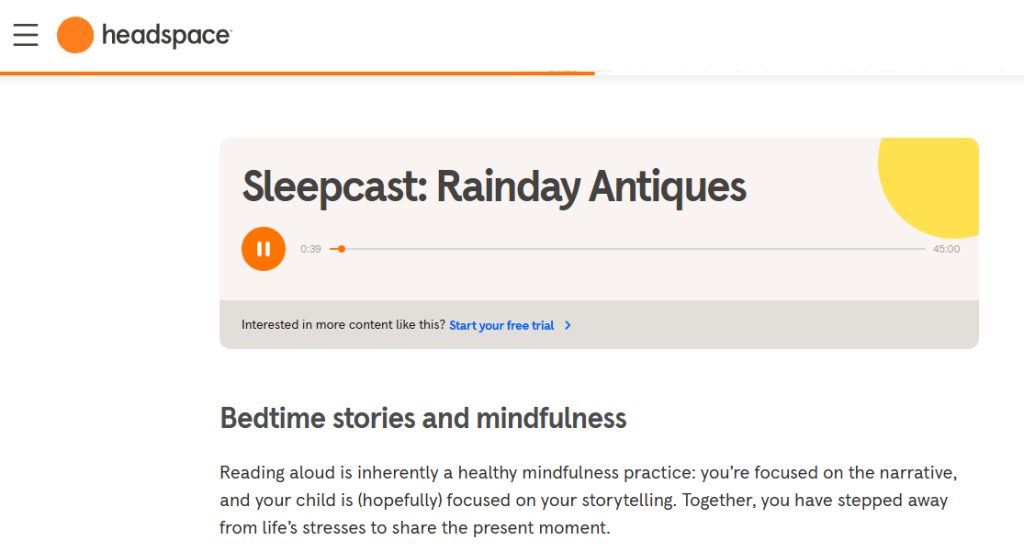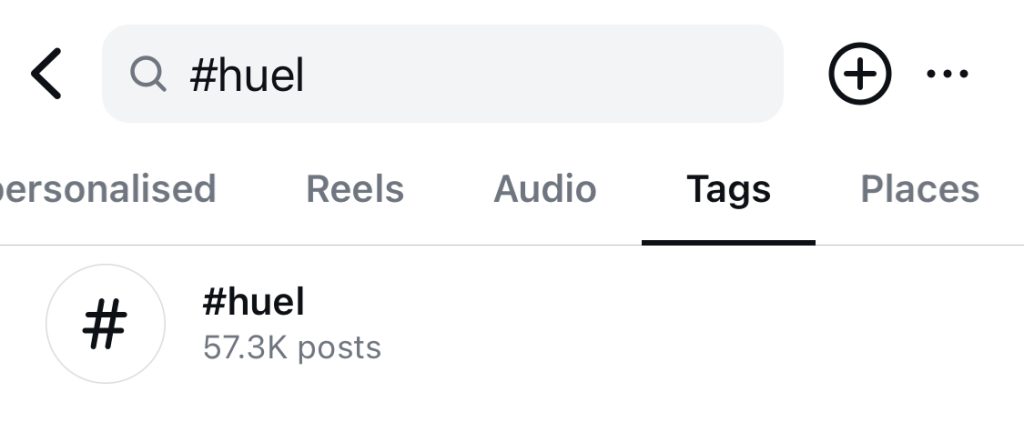The wellness market is heavily saturated.
To succeed in this highly-competitive industry, you need customers who stick around, trust your brand, and feel connected to your mission.
That’s why building brand loyalty as a health and wellness business is pivotal to your success.
Storytelling can be a strategic way to create that connection. It makes your brand relatable and memorable.
Let’s take a closer look at four wellness brands that are effectively using storytelling. We’ll touch on some of their marketing efforts and share how they inspire loyalty among their customers.
Table of Contents
- Headspace tells stories to promote restful sleep
- Peloton invites members to share and celebrate their workout accomplishments through Instagram Stories
- Bloom Nutrition uses podcasting to share its story
- Huel encourages its customers to share their #huel moments
- How your healthcare brand can use storytelling to promote brand loyalty
- Wrap up
Headspace tells stories to promote restful sleep
Headspace, the popular meditation app, launched in 2012 and has grown rapidly since — with over 70 million downloads and millions of subscribers.
Its success comes from the ability to connect with users emotionally through stories.
For example, one way it uses storytelling is to promote restful sleep. The brand created a unique feature called “Sleepcasts,” which are guided meditations that tell calming stories to help users drift off.

The combination of storytelling and soothing soundscapes creates a tranquil and safe experience for listeners. This helps customers connect deeply with the brand.
The key lesson we can learn from Headspace’s storytelling strategy? You can inspire trust and loyalty by using storytelling to help your customers fulfill a wellness need. (In this case, getting good sleep!)
Peloton, a leader in the fitness industry, thrives on community and connection. The stationary cycling brand invites members to share their workout accomplishments through Instagram Stories.
Users post their achievements — whether completing a ride, hitting a personal best, or simply enjoying a class.
This creates a vibrant community that celebrates each other’s successes.
Since launching its Instagram sharing to Stories initiative in September 2020, 89,000 members have created more than half a million Instagram Stories from the Peloton app. These shared moments inspire others and foster a sense of belonging among users.
The key lesson we can learn from Peloton’s storytelling strategy? When people feel part of a community, they are more likely to stay loyal to your brand.
Bloom Nutrition is a wellness brand known for its greens supplement. The team effectively uses podcasting to share their story.
In one episode, co-founder Kelsey discusses the journey of building the brand with her husband, Greg. They recount how it all started in her dad’s attic and evolved into a popular wellness brand. (Which has been featured in Forbes, all over TokTok, and even in celebrity pantries).

They also share valuable advice for aspiring entrepreneurs. This transparent storytelling helps listeners see them as real people — not just a company selling wellness products.
The key lesson we can learn from Bloom Nutrition’s storytelling strategy? When you share your journey and challenges, you inspire wellness customers to feel more connected to your brand.
Huel, known for its meal replacement products, has launched a user-generated content campaign (UGC) called #huel. It encourages customers to share positive stories and testimonials about their experiences with Huel products.
Users post photos and captions, showcasing how Huel fits into their daily lives.
This campaign has resulted in a wealth of authentic content that highlights real customer experiences. (Also known as “social proof.”)
Over 57,000 posts on Instagram reference #huel.

(Screenshot provided by the author)
The key lesson we can learn from Huel’s storytelling strategy? Starting UGC campaigns builds a community of loyal fans who feel valued. Customers appreciate being part of the brand’s narrative and sharing their unique journeys.
How your healthcare brand can use storytelling to promote brand loyalty
Here’s how you can incorporate storytelling into your marketing efforts.
Bake storytelling into your offerings
Like Headspace, a mental health organization, include narratives that resonate with your target market in your products or services. Think about how your offerings can tell a story that connects with your audience’s wellness needs.
For example, imagine you run a skincare brand focused on natural ingredients.
Instead of just listing product benefits, share the backstory of each ingredient. Highlight where it’s sourced, how it’s sustainably harvested, or a unique story about its cultural significance.
For instance, if you use aloe vera, tell the story of its ancient use in different cultures for healing.
Invite your customers to share on Stories
Create opportunities so that your customers can share their experiences on social media. Use Instagram or Facebook Stories to feature testimonials or highlight user-generated content.
For example, create hashtags or challenges that invite users to celebrate their progress. Then, reshare their Story posts in your social media Stories. (This helps you boost your online presence while reinforcing the idea that your brand supports their wellness journey.)
Share your brand story on your podcast or relevant shows
Dedicate an episode on your podcast to your brand’s story. Dig deep into the entire timeline, why you got started, and the bumps and bruises along the way.
You can also invite your customers to call into your podcast to share their experiences with your brand.
If you have guest opportunities, share your story on those podcasts, too. You can also create a podcasting guest strategy to help your brand get featured in more shows.
Other channels and methods you can use to feature your brand story include:
- Video marketing
- Email marketing
- Blog posts
- Ads
Start user-generated content campaigns
Encourage customers to share their positive stories with your brand using a dedicated hashtag on social media. This approach creates a wealth of content that showcases your brand’s impact on their lives.
It also fosters community and adds social proof to your marketing efforts.
*Pro-Tip: Use influencer marketing to scale your UGC marketing campaigns.
Creating a coworking cafe environment can also encourage customers to share their experiences, enhancing your user-generated content campaigns.
Bonus tip: Create engaging case studies
Work with your customers to gather quotes and stories about their journeys with your products. This will create a strong connection and showcase the benefits of your offerings.
Using storytelling in these ways can help your wellness brand foster loyalty and build a community around your mission.
Wrap up
Storytelling is a powerful tool to increase brand loyalty in the wellness industry. As we’ve shown with Headspace, Peloton, Bloom Nutrition, and Huel, sharing authentic narratives fosters genuine connections and encourages customers to become loyal advocates.
Use the strategies and holistic approaches discussed here to integrate storytelling into your marketing plan and attract potential customers. Build a strong relationship with your target audience and watch your brand loyalty grow. Oh, and remember to harness the power of your social media platforms in the wellness space.
PS: Need help building brand authority? We’re here for you. Contact us now to learn more about our ethical link-building services.
Luca Ramassa is Outreach Specialist at LeadsBridge, passionate about Marketing and Technology. His goal is to help companies improve their online presence and communication strategy.
